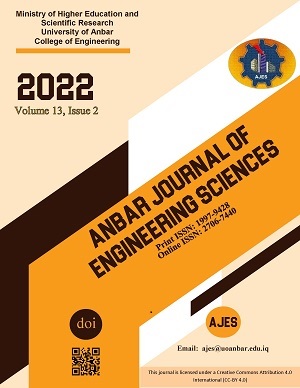Abstract
In this article, an experimental study of the single-pass hybrid (PV/T) collector is conducted in the climatic conditions of Fallujah city, where the experimental results are compared with a previous research to validate the results. The effect of changing the angle of inclination of the hybrid collector (PV/T) and its effect on the electrical power in the range (20°-50°) is studied. The optimum angle of the collector is found to be 30°, which gives a maximum electrical power of 58.8 W at average solar radiation of 734.35 W/m2. In another experimental study with different air flow rates ranged from 0.04 kg/s to 0163 kg/s, where it is found that the maximum electrical power of 57.66 W at an air flow rate of 0.135 kg/s, while the maximum thermal efficiency reaches 33.53% at an air flow of 0.163 kg/s at average solar radiation of 786 W/m2.
